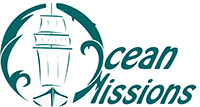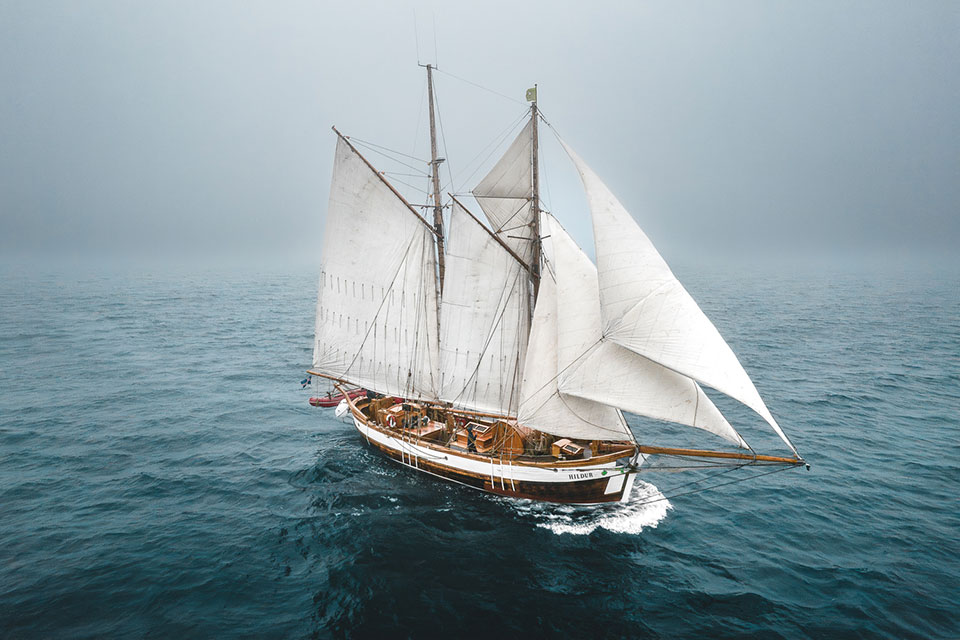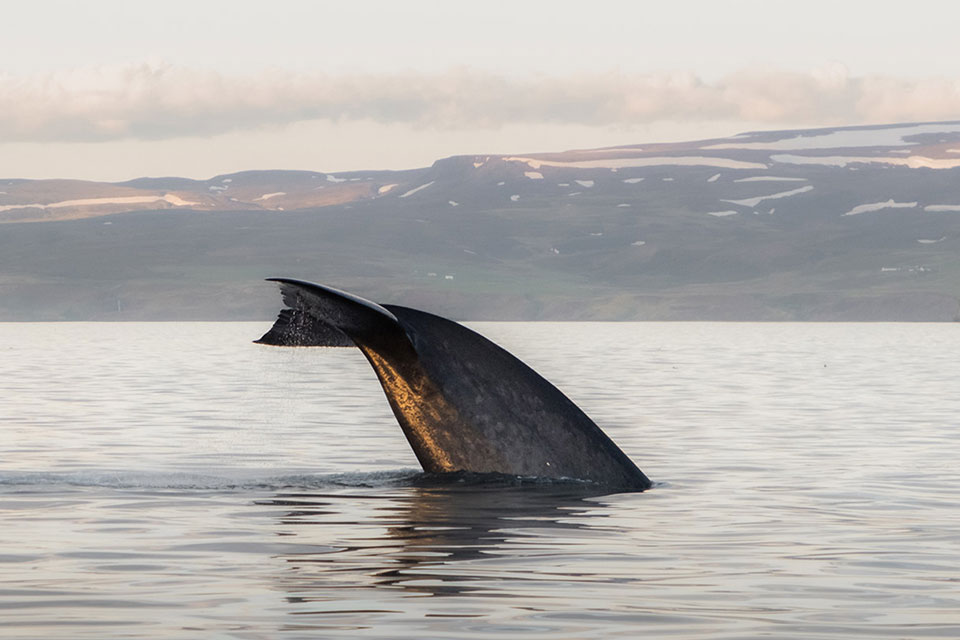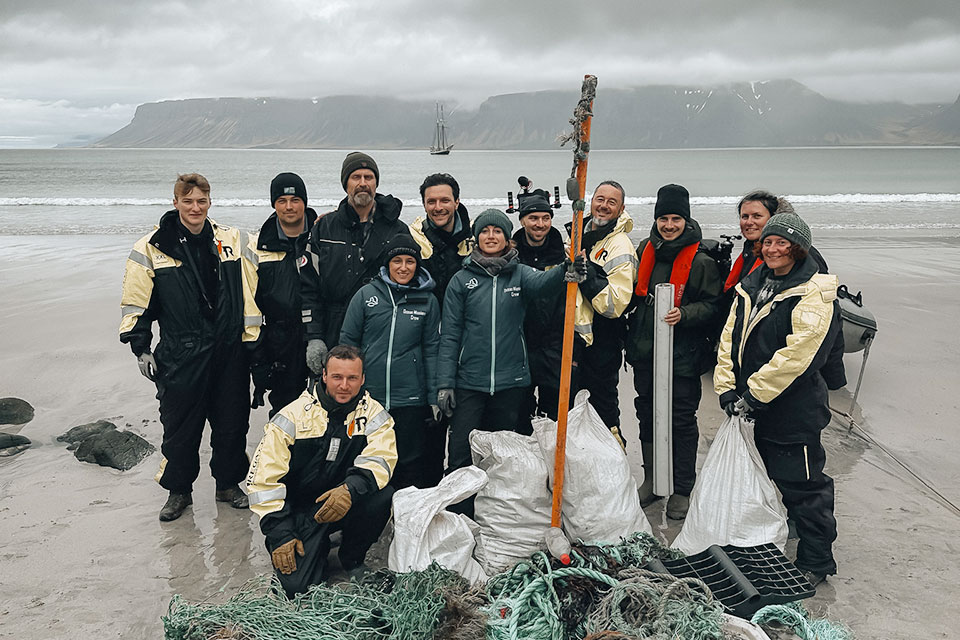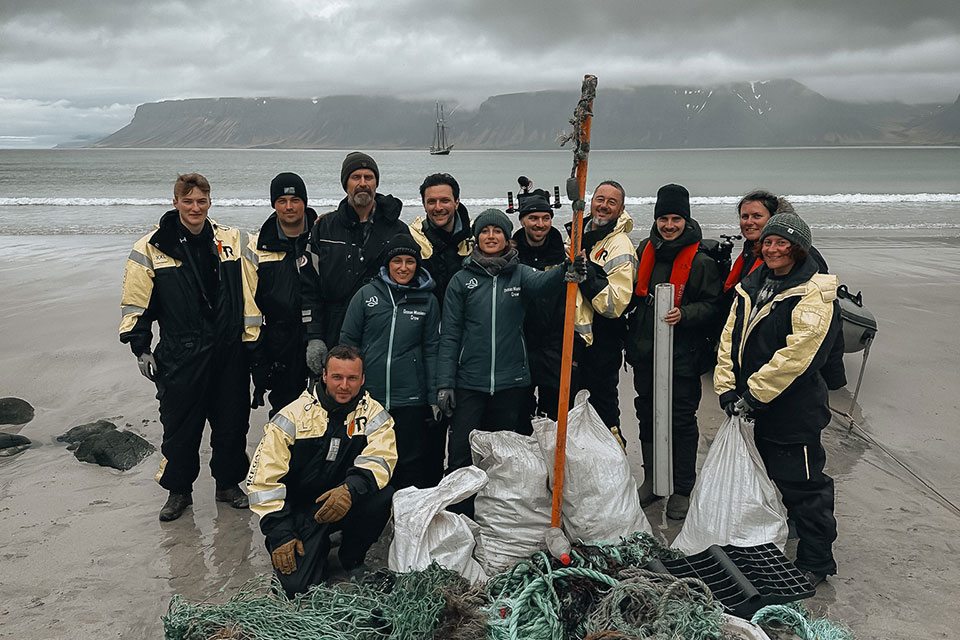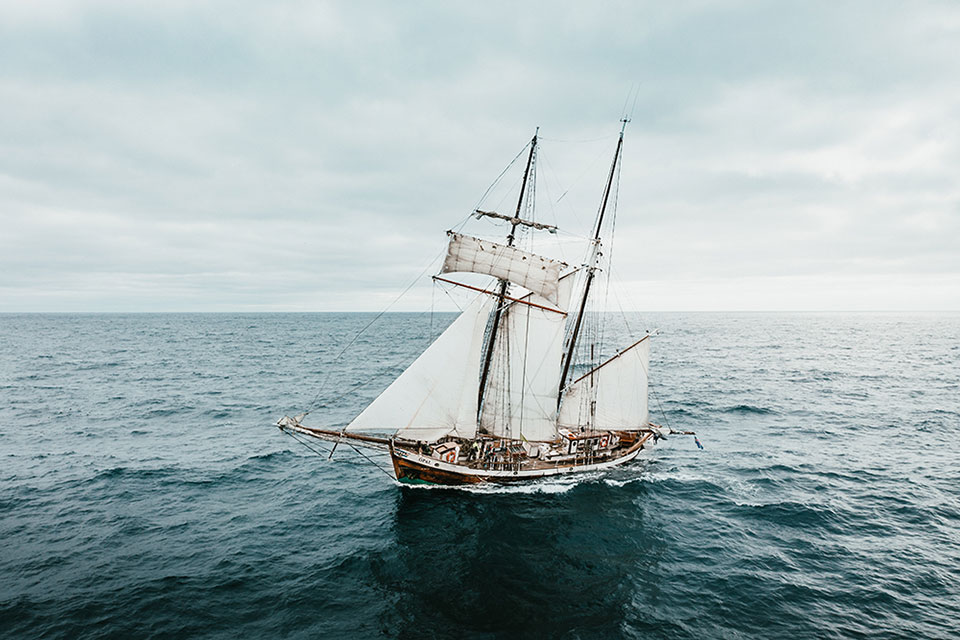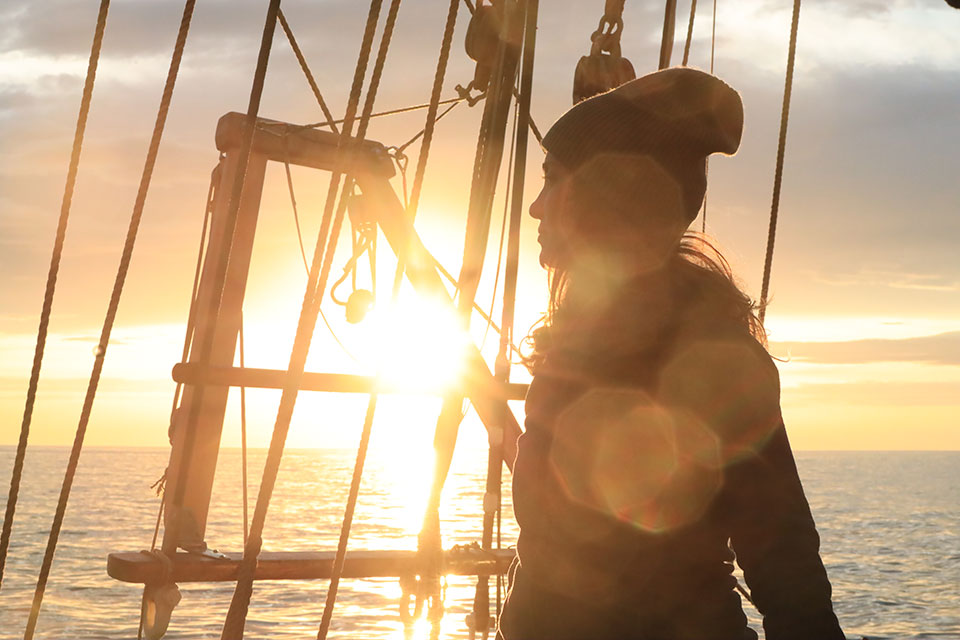In a journey of self and external exploration into the icelandic natural wonders, we reveal the hidden stories of our planet and seek for solutions to adreess environmental issues in the Arctic.
Location: Iceland
Every year, I set sails on Schooner Opal to explore remote areas in Iceland and to report signs of unhealthy oceans. It all started as a dream some years ago, a dream to become part of the change that we wanted to see in the world. As ocean scientists, guides and sailors, the dimensions of the current environmental problems linked to the limited initiative of decision makers to address issues, is a heavy burden we carry with us in our daily life and just because of the fact we truly care about our planet and the future on Earth. The oceans, the big neglected for centuries in the eyes of most people because we haven’t been able to look beyond the surface and open our minds. We are just now starting to realize that without blue there is no green, that without healthy oceans we won’t be able to breathe, that the planet would simply collapse. Oceans are the engine of planet Earth, home to the majority of the species living on the planet, and possibly the origin of life. In short; our lives are tightened to the blue. For that reason, me and some friends created Ocean Missions. By Translating our lifestyle to people, we aim to inspire the world to stand for nature, to make a contribution, to give back to nature, to support science and to create change makers. Nothing could make me happier! It is truly exciting!
The journey is a combined experience where a group of likeminded people come together to explore ways to help preserve the ocean and coastline landscapes, based on their experiences and ideas. And it all happens in the best scenario that someone can imagine; inspired by the soul of an authentic 70-year-old wooden sailing boat surrounded by Icelandic nature and guided by the power of the oceans and the wind.
Despite it being mid-May, it feels like March. It is still very cold (around 5-7 degrees) and there is a significant cover of snow in the mountains. The next morning, just before departure I am just running around here and there trying to not forget any scientific equipment behind. Despite my level of stress and tiredness already (there had been some previous intense weeks of Opal maintenance) I feel the excitement on the boat and the conversations around me. Heimir, our captain, is not optimistic about the weather forecast for the week. He never is, but he claims that it is better to start with low expectations and work from there. We have been sailing together for many years now and I know that usually this works out so I did not worry too much about it. It is 06:30 am, finally, we leave Húsavík, our home town, behind us and set sails to Sigluffjördur, a small charming fishing village in the North where we will spend the night before heading to the remote Wesfjords. The weather is good enough for a beach clean-up and performing a microplastic survey, so we do and again like other years…we find plastic everywhere.
-Wow! I am shocked! I never expected to see so much plastic here, this feels so far aways from civilization! – says one of the participants holding a piece of net that looks two times her size. She is from England and works in a rescue seal centre back home. Since 2019, we have been monitoring the problem of plastic pollution in Icelandic waters and cleaning the coasts, to alert the Icelandic governments on the need for solutions.
At 21:30 we decided to keep going and sail through the night to the Westfjords. There is nothing like sailing with the wind on a wooden ship. The cracking of the wood and the wind in the sails feels like total freedom.
Next day in the morning, The Westfjords natural reserve ahead, a place where the hidden people leave -Huldufólkfull- the trolls and elves. We sail slowly in calm seas through the mist and the fog for the last bit of this leg around „the Horn “. Only the schooner sail stands up. Bird calls of all kinds start becoming more and more intense and eventually there we start seeing it through the fog like a ghost appearance: the magnificent cliffs of Hörnbjarg, more than 500 m high. We approach this neighbourhood with caution and respect, the smell of guano and fresh kelp is intense. When we get close enough Charla (whale researcher and bird expert) and I grab some binoculars and instantaneously start looking for an old friend. His name is Yann, a solitary gannet that decided to occupy a nest here some years ago and seems to not find the right partner. It is the only gannet in the whole nesting crowd of guillemots and fulmars, and the largest bird of all! Charla looks at me and smiles. In other expeditions we found gannets with fishing lines around their necks or entangled in their nests. I know she is very happy to know that he is doing fine even though he is alone. One of the imminent challenges for birdlife in Iceland is climate change. More unpredictable weather, storms, loss of ice and the increase of water temperature is making life tough for many birds that were preying on reliable sources of small fish while nesting and suddenly, they cannot find enough of it. That is the case of the emblematic Atlantic puffin among others.
The weather is building up and it is time to go… the big swell does its job making people sick and soon the crew goes down to secure things against the waves and to assist the guys. Still, we manage to arrange a bird survey when we are far enough from the coast.
All of a sudden, we are crossing the area of Breidafjördur trying to escape a big storm that quickly approaches behind us. It is time for calling “all hands-on deck” pulling ropes and soaking wet to keep ahead of the weather front. The schooner sail and a full reef main help us to keep a firm course. We are looking for shelter in Grundafjördur. Until an intense sailing and workout, at 22.30 we find a small pier and take a rest. It is so cold that I don’t feel my fingers anymore. I try to sleep but the boat keeps waking me up in the middle of the night, rubbing against the pier due to strong winds up to 40 knots. The rest are sleeping, but me and Heimir decided to stay on watch, with a good coffee, telling stories and playing guitar but sometimes running to arrange ropes and fenders in the blizzard as the boat keeps rocking.
Next day is a stormy day, but people are having great fun and seeking adventure so we decided to hike and witness one of the amazing powerful waterfalls in Iceland. Struggling with camera gear and against the wind, and helping each other to almost dive in the mood, finally we arrive. It doesn’t make sense but it is truly magical like every nature wonder in Iceland. This waterfall is upside down! The water goes up and nothing makes sense, clouds are moving fast, and the wind blows so hard that we can barely keep our feet on the ground. Quickly we saw a rainbow. Everybody smiles and hugs each other. The feeling is “we are a team, we can do everything we want, if we do it together”. That evening everyone was tired and we stayed next to the fireplace in the Opal saloon, where we shared our stories and discussed what we can do to solve the climate crisis.
Finally, the next day the weather greets us with clear skies and following winds! Daniel – one of the crew members and a biologist – hangs his still soaked clothes on deck to dry and sets the Opal hammock for people to enjoy the morning sun. But the best part was about to come!
With all full sails we sail from Grundafjördur to Ólasvík. At this time of the year it is common to see orcas and sperm whales in the area since they come to feed mostly on herring in the productive slopes of Snaefellsnes peninsula. So, almost everyone but the cooking team gathers on deck in the search for these beautiful creatures. We are so excited about the wind in the sails. After setting the topsail I climb all the way up to the foremast – this is the pirate style girls! Look at the views! – . A blue vast ocean in front of me, the breeze in my face and full of inspiring minds below. Snæfellsjökull Glacier in the horizon. I ask myself – For how long will this glacier last? For a minute I think about my family back in Spain and I want them to be next to me-, I wish everyone could feel what I feel right now! We are one with nature, we belong to the sea, we are sailing with a purpose! Nine knots. I look down and smile seeing my friend Norris almost diving in the water as the bowsprit goes up and down surfing the waves and he tries to capture these vibes in pictures.
Suddenly it happens: the unmistakable huge black fin of a male orca, makes its appearance sharp cutting the ocean surface. The crew screams like they have never seen a whale before. One of the smartest formidable and social creatures on Earth. -This guy is not alone. There are many more fins approaching behind him, and I see so many birds flying around over there too! – says one of the whale specialists. Immediately the crew runs for the camera gear. The differences in the dorsal and the paddle patch – the white pattern in the back just behind the dorsal fin- is essential to identify the individuals. This information is crucial to monitor the movements of these ocean giants and the challenges they are facing. We counted more than thirty individuals. I never saw orcas in such great numbers! Soon we would realize why; they found a big shoal of fish near the surface and they were sharing the feast. In cetaceans, it is all about family and mutual respect. Babies will stay by the side of their mothers and learn, while at least two huge males are confident guarding the whole pod. The wise matriarchal female would lead the operation and teach the others. After 30 minutes of intense feeding, the whole group was joyful and playful, you could feel the realization and the excitement within the group. Some of them even approach the boat being curious and staying for a while. Like if we were now part of their family pod.
And all of a sudden, we were all celebrating together the beauty of being present and alive, the beauty of being wild. And we woke up from our lethargy… to see beyond the surface.
That lesson of realization was priceless.
Soon after that, we sailed around Snæfesness peninsula. It is almost sunset and the colours are getting crazy. The wind is still on our side. Sailing along the rough coast we feel the strong power of the tides and localized currents up to 2 knots against. Sailing in these conditions can be particularly dangerous if you are not fully aware of the natural elements. But here we are all in with nature, breaking through, becoming wild. Weather is on the limit and the sun is already setting. Me and Heimir hesitated for some time. Should we go? Let’s just try it! I say, this is a magical place! We change our course and anchor in front of the majestic Djupulasandor black sandy beach. Daniel, Charla and I bring the group onshore on the little grey zodiak. A beautiful arctic fox, already in its brown summer outfit, guards the beach. We wandered for about half an hour. A huge orange full moon appears on the horizon and leads the way to Opal on the ocean surface…It feels almost unreal. It’s time to go! Strong gusts are approaching, and the captain gives the commands to go back onboard before we get stuck on the beach. The wind roars again
After seven days of exploring, we reached our last destination, Reykjavik harbour. Everybody feels like re-born after the experience.
Only during this journey, we collected 158 Kg of marine debris in two beach clean ups in less than three hour and performed six microplastic surveys in different coastal areas. Our results indicate that microplastic were present in every single survey we did during the expedition (six in total). The plastic crisis is a global problem and we all share the responsibility to do something.
Protecting the Arctic should be like taking care of our mothers. They have given us food and a safe place to live for as long as they can remember and now is our time to prove our gratitude and give back.
It is time to release the new generation of change makers, so full of emotions, we say bye to the guys that leave the ship, :
– Belén, I was almost giving up on the mission to help the planet because everyone around me was saying that it doesn’t matter what we do, that it is too late… But thanks to the work and the passion of your team, I am full of HOPE again and I feel capable of everything. Now I know my purpose, and forever will be it
Photographer: Norris Niman
Video by Norris Niman
